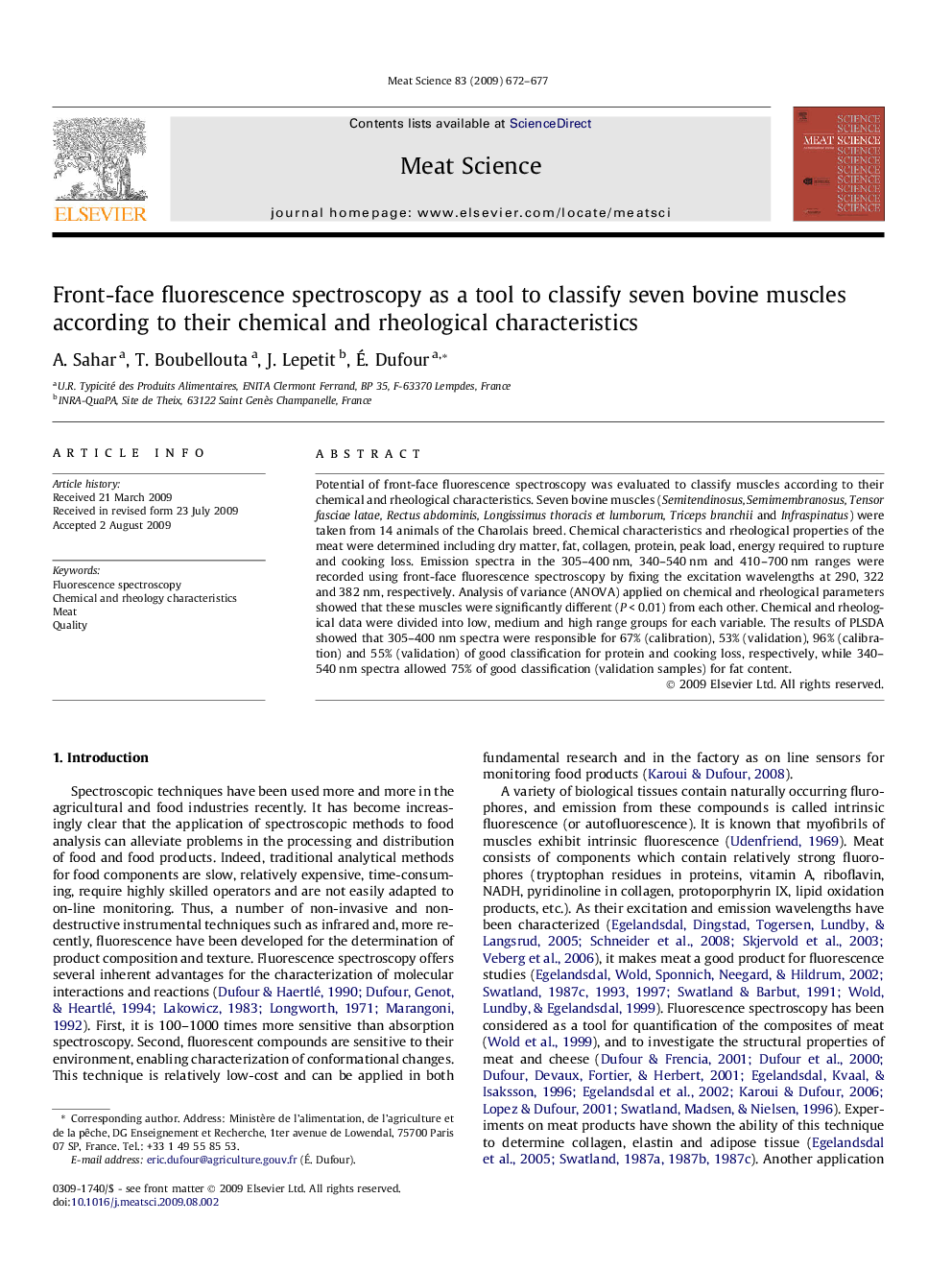| کد مقاله | کد نشریه | سال انتشار | مقاله انگلیسی | نسخه تمام متن |
|---|---|---|---|---|
| 2451203 | 1109675 | 2009 | 6 صفحه PDF | دانلود رایگان |

Potential of front-face fluorescence spectroscopy was evaluated to classify muscles according to their chemical and rheological characteristics. Seven bovine muscles (Semitendinosus, Semimembranosus, Tensor fasciae latae, Rectus abdominis, Longissimus thoracis et lumborum, Triceps branchii and Infraspinatus) were taken from 14 animals of the Charolais breed. Chemical characteristics and rheological properties of the meat were determined including dry matter, fat, collagen, protein, peak load, energy required to rupture and cooking loss. Emission spectra in the 305–400 nm, 340–540 nm and 410–700 nm ranges were recorded using front-face fluorescence spectroscopy by fixing the excitation wavelengths at 290, 322 and 382 nm, respectively. Analysis of variance (ANOVA) applied on chemical and rheological parameters showed that these muscles were significantly different (P < 0.01) from each other. Chemical and rheological data were divided into low, medium and high range groups for each variable. The results of PLSDA showed that 305–400 nm spectra were responsible for 67% (calibration), 53% (validation), 96% (calibration) and 55% (validation) of good classification for protein and cooking loss, respectively, while 340–540 nm spectra allowed 75% of good classification (validation samples) for fat content.
Journal: Meat Science - Volume 83, Issue 4, December 2009, Pages 672–677